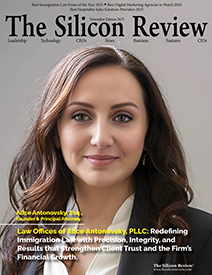>>
Industry>>
Compliance and governance>>
Income Inequality in Canada Hi...Income Inequality in Canada Hits Record High, Driven by Investment Gains
The Silicon Review
11 October, 2024
The middle 60% of Canadians suffered a decrease in their share of discretionary income, even while wage growth gave those in the bottom 20% a slight boost in income
According to Statistics Canada, the level of income inequality in Canada has risen to its highest point ever. In the second quarter of 2024, there was a 47 percentage point difference in disposable income between the wealthiest 40% and the poorest 40% of Canadians, which was the biggest increase since 1999.
According to the survey, the wealthiest 20% of earners had the biggest increases in income, mostly as a result of gains from investments made possible by high interest rates. Higher returns on savings and investments helped these wealthier households, whereas lower-class Canadians were unable to take advantage of these gains. The middle 60% of Canadians suffered a decrease in their share of disposible income, even while wage growth gave those in the bottom 20% a slight boost in income. With an average household wealth of $3.4 million, the richest 20% of Canadians currently hold more than two-thirds of the nation's wealth, while the poorest 40% only control 2.8%.
Chrystia Freeland, the minister of finance, defended the policies of the Liberal government by pointing to initiatives to help the middle and lower classes with services like dental care and daycare. Pierre Poilievre, the head of the Conservative Party, on the other hand, accused Liberal policies, especially "money printing," for inflating the wealth of elites and raising the cost of living for others.
The widening gap highlights growing worries about financial inequality and wealth concentration in Canada.


_2025-11-17_06-38-14.webp)

 (1)_2025-10-21_13-35-14.webp)

_2025-10-02_10-21-48.webp)